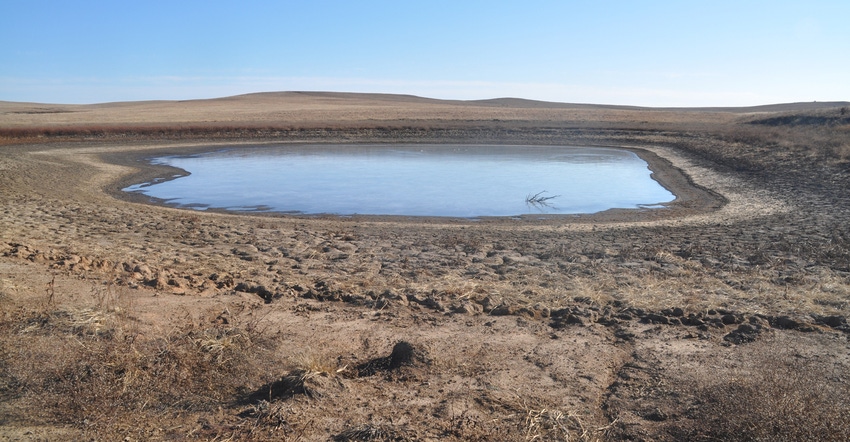
The specter of drought is back.
The Dec. 13 U.S. Drought Monitor map showed the entire state as “abnormally dry,” parts or all of 25 counties in south-central Kansas in “moderate drought,” and “severe drought” creeping into a couple of counties on the Oklahoma border.
“We’re got some pretty spotty stands of wheat and we really need some rain to get that out of the ground,” says Chris Boyd, who farms in Barber County and sells certified wheat seed. “I planted pretty late and the wheat is small, which is good. It isn’t using much moisture right now.”
For cattlemen, the impact on pasture ponds is significant. With calving season fast approaching, ponds that have turned to puddles surrounded by mud are pretty close to the last thing a rancher wants to deal with. Hauling water to lactating cows just might be one thing that’s even farther down the list, just above being downwind from the smoke you see on the horizon.
“I was at a seminar on fire danger,” says Waubunsee County rancher Joe Carpenter. “The National Weather Service was warning that we had enough summer rain to have some really good fuel loads out there, and that grass is dry.”
Throw in extremely low humidity and any spark will start a fire. Add high winds and a fire moves fast.
Carpenter says pasture conditions remind him a little too much of the intense drought during 2012.
“We are about the same as we were then, and we were hauling water to every pasture we have during and after calving,” he says. “You figure that lactating mama cow needs about 10 gallons of water a day and you have 500 mama cows, that’s a lot of water hauling.”
Carpenter says he is hoping for a hard freeze and a rain that produces enough runoff to refill ponds before calving starts at Downey Ranch around the end of the first week of February.
He says the cover crops of rye, triticale and oats that he planted for winter forage in August and September germinated and came up looking pretty good when the rain stopped.
“I thought we would have great forage grazing,” he says, “but those crops, which should be knee to waist high by now, are ankle height and look more like a dry fescue lawn than a field of forage crops.”
Carpenter says he planted sorghum sudangrass last spring and baled it. He leaves bales in the field for winter supplemental feeding and plants cover crops in the field. But with so little standing forage, the bales are going more quickly than he planned.
Fortunately, he says, he had some hay carried over from last year and should have enough to last the winter.
It’s water in the ponds that is the big concern.
“Water is below the drinking point at all the ponds,” he says.
About the Author(s)
You May Also Like




